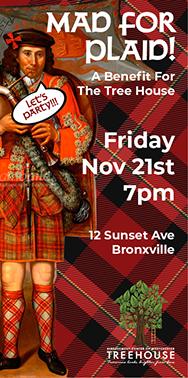Remembering the Hotel Gramatan

Gramatan Tower, 2019. Photo by N. Bower
By Marilynn Hill, Lifetime Co-Chair, The Bronxville Historical Conservancy
Mar. 13, 2019: “If ever there were a Bronxville landmark, the Hotel Gramatan is it. For who comes to our community and fails to see it sitting high and proud on a rocky hill overlooking the village? And what resident has not had the secure sensation of being ‘home’ as he steps off the train and feels it hovering over him?”
These remarks, written by a Bronxville historian shortly before the 1972 demise of the Hotel Gramatan, capture the sentiment of villagers both then and now regarding the place held by that grand hostelry in the minds and hearts of local residents. Today, mention the hotel to almost anyone who lived in the village before the 1970s, and the name immediately elicits a personal memory associated with the landmark.

Gramatan Tower, March 2019.
Built in 1905 by William van Duzer Lawrence, the large Spanish Mission-style building with its arches, creamy stucco exterior, and red-tile roofs exuded grandeur in both size and luxury. Designed to incorporate three significant architectural elements, the hotel at the top of the hill visually cascaded to the Gramatan Arcade of shops below, and these two structures were connected by the stately Gramatan Tower, which housed an elevator for guests to descend to the street or train.
With 300 guest rooms, a grand ballroom, three dining rooms, a 125-carriage stable, and piazzas, or porches, on all sides, the resort hotel attracted a national and international clientele. Some of its more well-known guests included Theodore Roosevelt, Mrs. Jefferson Davis, the Barrymores, Greta Garbo, Gloria Swanson, Theodore Dreiser, and Eleanor Roosevelt, to name a few.

Hotel Gramatan, circa 1920s.
But more important and enduring for village citizenry was the hotel’s role as a local social center. Wedding, birthday, and graduation celebrations; service organization meetings; family dining excursions; and adult balls and youth dance classes were all held at the hotel. Most notable among the latter was Miss Covington‘s weekly dance class attended by, among others (and much to his distress), the young, shy John F. Kennedy.
The Hotel Gramatan was also a part of a cluster of buildings that made up Bronxville’s early civic, service, and commercial center. Guests at the hotel had easy access to the new village hall, library, police department, bank, train station, and hospital, where they met and mingled with local residents.
By the end of the 1930s, however, the great depression of the previous decade had dimmed the grandeur of the hotel, and gradually, the glamorous guests were replaced by less well-off pensioners. (Some years later, with stealth, mischievousness, and a bit of irony, a group of teenagers climbed the scaffolding atop the hotel to the large illuminated marquee and removed enough light bulbs to beam out across the community the words “Hot Grama.”)
By the 1960s, in spite of the fact that the exterior still projected grandeur, the hotel had fallen into disrepair and needed renovation. Minimal work was done on the hotel building, but the repair needed on the Gramatan Tower required simplifying and reworking the roof and replacing the mission arches with a flat, more neutral-style ridge design. However, the original slim profile of the sentinel tower continued to blend with the arcade and hotel architecture of the past, as it would with the Gramatan Court townhouses that eventually replaced the hotel. (Later, in the 1990s, because of further deterioration that threatened the safety of the elevator and passengers, additional restoration was required on the tower’s upper walls and roof.)
Although villagers knew well that the hotel had seen better times, the 1972 Lawrence family decision to tear down the magnificent building still came as a shock. Its total destruction took a mere two days; villagers’ adjustment to the barren hilltop took many months. A building so deeply embedded in community history, however, is also deeply embedded in communal memory, and the sight of the Gramatan Arcade and the Gramatan Tower extending toward the hilltop can still easily conjure up memories and that “secure sensation of being ‘home’” – of being part of a community – that our early historian invariably felt when in the shadow of the old Hotel Gramatan hillside.


Author's note: The sources for this article are articles written by Hill, Marcia Lee, and Ann English in volumes 1, 3, and 4 of The Bronxville Journal, published by The Bronxville Historical Conservancy, and the conservancy's book Building A Suburban Village: Bronxville, New York, 1898-1998, edited by Eloise Morgan. The quotation at the beginning of the article is from the book Bronxville in the Good Ol’ Days by Anita Inman Comstock. The last three photographs were provided courtesy of the Bronxville History Center.
Editor's note: As a public service, MyhometownBronxville publishes articles from local institutions, officeholders, and individuals. MyhometownBronxville does not fact-check statements therein, and any opinions expressed therein do not necessarily reflect the thinking of its staff.
Government & History Directory
Bronxville is a quaint village (one square mile) located just 16 miles north of midtown Manhattan (roughly 30 minutes on the train) and has a population of approximately 6,500. It is known as a premier community with an excellent public school (K-12) and easy access to Manhattan. Bronxville offers many amenities including an attractive business district, a hospital (Lawrence Hospital), public paddle and tennis courts, fine dining at local restaurants, two private country clubs and a community library.
While the earliest settlers of Bronxville date back to the first half of the 18th century, the history of the modern suburb of Bronxville began in 1890 when William Van Duzer Lawrence purchased a farm and commissioned the architect, William A. Bates, to design a planned community of houses for well-known artists and professionals that became a thriving art colony. This community, now called Lawrence Park, is listed on the National register of Historic Places and many of the homes still have artists’ studios. A neighborhood association within Lawrence Park called “The Hilltop Association” keeps this heritage alive with art shows and other events for neighbors.
Bronxville offers many charming neighborhoods as well as a variety of living options for residents including single family homes, town houses, cooperatives and condominiums. One of the chief benefits of living in “the village” is that your children can attend the Bronxville School.
The Bronxville postal zone (10708, known as “Bronxville PO”) includes the village of Bronxville as well as the Chester Heights section of Eastchester, parts of Tuckahoe and the Lawrence Park West, Cedar Knolls, Armour Villa and Longvale sections of Yonkers. Many of these areas have their own distinct character. For instance, the Armour Villa section has many historic homes and even has its own newsletter called “The Villa Voice” which reports on neighborhood news.
Link to Village of Bronxville One Square Mile Monthly Newsletter
Village of Bronxville Administrative Offices
337-6500
Open 9:00am - 4pm excluding holidays and weekends
Bronxville Police Department
337-0500
Open 24 hours
Bronxville Parking Violations
337-2024
Open 9:00am - 4pm excluding holidays and weekends
Bronxville Fire Deparment
793-6400

















